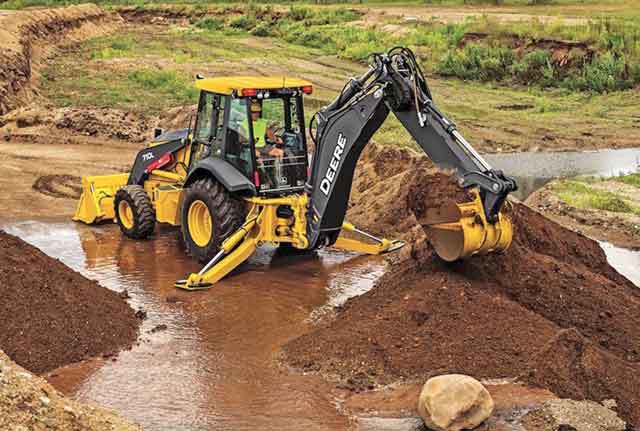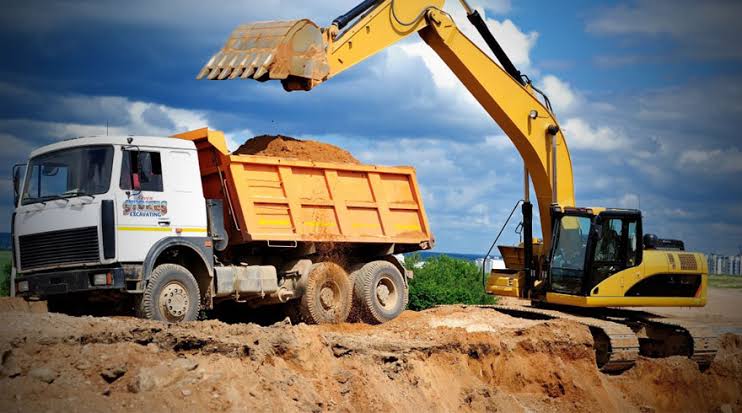Septic Ohio - Comprehensive Septic Tank Services in Ohio
Septic Ohio - Comprehensive Septic Tank Services in Ohio
Blog Article
Unveiling the Art of Excavation: Pro Tips for Safe and Productive Digging
As dirt is turned and planet is moved, the details of excavation expose themselves, demanding an eager understanding of devices, soil make-up, security protocols, and environmental considerations. The proficiency required to navigate these aspects effectively can indicate the distinction between an effective excavation project and a prospective disaster.
Significance of Correct Equipment
To make certain the safety and security and effectiveness of any excavation project, making use of the proper tools is extremely important. Excavation tasks differ in range and complexity, ranging from tiny domestic landscaping jobs to large construction tasks.
Excavators are essential items of machinery in any kind of excavating operation. These flexible machines can be found in various sizes to suit various project needs. Mini excavators are ideal for smaller sized jobs, while larger excavators deal with a lot more substantial jobs effectively. Backhoes are another important devices type, integrating the functions of a loader and an excavator in one machine. They are useful for tasks requiring versatility and ability to move.
Apart from excavators, various other vital equipment consists of dump plates, bulldozers, and vehicles. Dispose vehicles are essential for removing and moving excavated materials, while plates are utilized for digging deep and slim trenches. Bulldozers master jobs that call for pressing big quantities of soil or particles. By spending in the proper devices, excavation jobs can be completed safely, on time, and with accuracy.
Understanding Dirt Make-up
A comprehensive understanding of dirt structure is essential for performing excavation tasks with precision and security. Recognizing the different types of soil is critical as it straight impacts excavation approaches, equipment option, and total project efficiency.
Sand bits are the biggest and give excellent drain yet provide little cohesion. Silt bits are smaller sized than sand yet larger than clay, supplying moderate drain and cohesion. Clay particles are the smallest and supply high cohesion however bad water drainage. Raw material, such as decaying plant material, affects soil fertility and stability.
Prior to commencing excavation, conducting soil examinations to identify its structure and qualities is crucial. This info helps in choosing the proper equipment, implementing safety measures, and creating excavation methods tailored to the certain soil problems - excavating ohio. By comprehending dirt structure, excavation experts can enhance job outcomes while ensuring security and adherence to ideal methods
Precaution and Protocols
Comprehending dirt structure is the cornerstone upon which safety procedures and procedures for excavation projects are constructed, ensuring the wellness of workers and the success of the undertaking. When it pertains to security throughout excavation, there are numerous key actions that must be implemented to minimize threats and protect against mishaps.
Primarily, prior to any excavating begins, a detailed examination of the site must be performed to identify any type of possible hazards such as underground energies, unsteady have a peek at this website soil problems, or neighboring frameworks that might present a threat. It is critical to have a skilled person oversee the excavation process to guarantee that all safety protocols are complied with strictly.
Additionally, all employees entailed in the excavation should be effectively trained in risk-free digging techniques and the proper operation of equipment. By adhering to these security steps and procedures, excavation jobs can be completed effectively and without case.
Reliable Excavation Planning
When embarking on an excavation task, meticulous planning is important to make sure effectiveness, security, and successful outcomes. Effective excavation preparation entails numerous key steps that are essential for the smooth execution of the project. The primary step is to perform a comprehensive website evaluation to determine any type of prospective hazards, such as below ground utilities or unpredictable soil problems. This info is vital for creating an in-depth excavation plan that consists of security measures and take the chance of mitigation approaches.
Once the website assessment is total, the next action is to create a clear timeline and routine for the excavation tasks. This includes determining the sequence of jobs, equipment demands, and workforce allowance. Proper organizing assists avoid delays and ensures that the job stays on track.

Moreover, interaction amongst all staff member is vital throughout the planning stage. Clear instructions, regular updates, and efficient coordination are essential for a successful excavation job. By spending time and initiative in precise planning, excavation teams can dramatically boost performance, reduce dangers, and attain successful results.

Handling Environmental Considerations
With enhancing emphasis on ecological sustainability in building methods, taking care of ecological considerations has come to be an important aspect of excavation jobs. Excavation activities have the prospective to impact the surrounding setting via soil disintegration, sediment overflow, habitat interruption, and contamination of water resources. To reduce these threats, it is necessary to execute ideal practices that focus on environmental management.

Furthermore, proper waste management is important to stop Read More Here soil and water contamination. Carrying out treatments for the disposal of hazardous materials, recycling of waste products, and minimizing making use of damaging chemicals can dramatically decrease the environmental impact of excavation projects. By incorporating these techniques right into excavation preparation and implementation, building and construction business can guarantee that their projects are not only secure and effective yet additionally ecologically accountable.
Conclusion
In conclusion, mastering the art of excavation calls for a thorough understanding of correct devices, soil composition, safety and security measures, and reliable planning. By following these guidelines and considering ecological elements, excavations can be conducted safely and successfully. It is critical to focus on safety and performance in every excavating project to make certain effective results.
As soil is transformed and planet is moved, the complexities of excavation reveal themselves, requiring a keen understanding of devices, soil make-up, safety methods, and environmental factors to consider.To guarantee the safety and security and efficiency of any kind of excavation project, using the suitable tools is critical.A comprehensive grasp of dirt composition is essential for implementing excavation projects with accuracy and safety and security. Understanding the various kinds of dirt is vital have a peek here as it straight impacts excavation techniques, tools selection, and general task efficiency. By comprehending dirt composition, excavation professionals can improve task outcomes while making sure safety and security and adherence to finest techniques.
Report this page